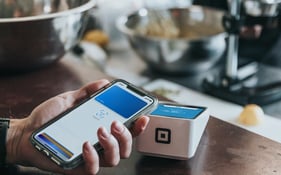Food safety is the practice of preventing foodborne illnesses by properly storing and preparing food, sanitizing your kitchen, and taking seriously any vector of possible contamination. From their first moments in a kitchen, restaurant workers are taught to hold food safety as an almost sacred industry value. Yet even with that culture, as the pandemic rages and instant online reviews threaten to sink an establishment over any miscue, flawless food hygiene has never been more vital. New technologies help restaurants maintain food safety, thus protecting customers and an establishment’s reputation.
What are the best ways to practice food safety for restaurants?
Train your staff: What may seem obvious to your 45-year-old kitchen manager may not be obvious to the 17-year-old dishwasher. So when you’re looking to solutions, find training programs that take into account a variety of experience levels and backgrounds. Then put systems in place to ensure that people actually live those best practices.
Set up your kitchen to avoid mistakes: Everything seems peachy when you learn it on an iPad while enjoying an iced tea. But what about that Saturday lunch rush? Will your sous chef absolutely, without a doubt use a different cutting board when he split chicken breasts than the one he just used to slice cucumbers? Think ahead and build in foolproof processes — for instance, color-coordinating your cutting boards by type of food.
Service and maintain your equipment: Your cold stuff needs to stay cold, just as your hot stuff needs to stay hot. Keep all of your food out of that comfy middle zone where bacteria thrive by making sure your refrigerators, hot surfaces, and other back of house equipment is operating as it should, at all times. You don’t want to be surprised by a health inspector — or a sick patron — who alerts you to the fact that something went awry.
How can you provide food safety solutions for restaurants?
Food safety technology will help you prevent messes and to catch errors before they become a problem. Bring staff up to speed with a development system such as Trust20, which will educate them specifically on food safety. Once your workers are pros with this stuff, set them up for success with fail-proof food storage. Consider refrigeration systems that alert you automatically when the temperature of a certain item rises or falls below a pre-set point. Did the power fail, or was a freezer door left cracked open? Digital systems such as Pathspot can let you know when something’s amiss, to ensure your food is safe and your inventory doesn’t spoil.
[Photo by Brands&People on Unsplash]





